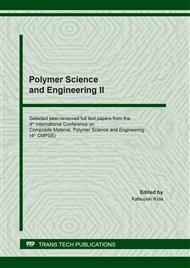p.49
p.57
p.67
p.77
p.85
p.91
p.99
p.105
p.111
Modeling the Tensile Strengths of Nickel-Based Superalloys at a Wide Range of Isothermal Exposures by Artificial Neural Networks
Abstract:
The nickel-based superalloys are unique high-temperature materials that are applied in gas-turbine engine manufacturing. The superalloys are compositions with complex doping. The master mechanical property of the alloys is the heat resistance, which is depicted by the values of the tensile strength after long isothermal exposures. However, for each superalloy, only certain temperature-time exposure parameters are known. The availability of information on the properties in the entire range of temperatures and holdings would significantly expand the possibilities of the superalloys applications. We have applied the artificial neural network to predict the missing tensile strength values for superalloys based on the chemical composition and the known tensile test conditions. The additional data preprocessing and the bootstrap have improved the model performance. A comparison of the modeled and the real experimental data has shown their convergence. The model verification has been carried out on the set of 10 common cast superalloys.
Info:
Periodical:
Pages:
85-90
Citation:
Online since:
June 2021
Authors:
Price:
Сopyright:
© 2021 Trans Tech Publications Ltd. All Rights Reserved
Share:
Citation:


